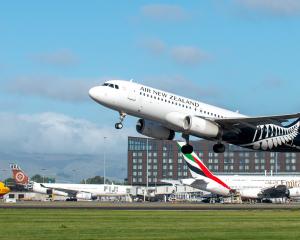All eyes will be on Fonterra tomorrow as the dairy giant reveals its annual result and finalises its payout for the 2014-15 season.
As for the country's dairy farmers, it has also been a challenging year for the co-operative which is axing 750 jobs as part of a major review of its business, saving it $103million a year.
Yesterday, Mid Canterbury dairy company Synlait Milk announced a $10.6million after-tax net profit,
nearly half the previous year's $19.6million result, while revenue was down from $600.5million to $448.1million, which the company attributed largely to decreases in dairy prices.
This year global dairy prices have plunged.
Although they have risen in the past three GlobalDairyTrade auctions, that was after a horror run of falls.
Fonterra's farm-gate milk price for 2014-15 sits at $4.40, a stark contrast from the previous season's record $8.40.
Two of the major banks have revised their 2015-16 season milk price forecasts higher over the past week, ANZ to $4.25-$4.50 (up from $3.75-$4) and ASB from $4.50 to $5.
Fonterra sits at $3.85, well below break-even for the majority of Fonterra farmers.
Synlait Milk paid its milk suppliers a total average milk price of $4.54 for the 2014-15 season, which consisted of a $4.48 base milk price and a $0.06 average payment for seasonal and value-added premiums.
The company has also downgraded its 2015-16 forecast milk price from $5.50 to $5, and said no dividend would be paid to shareholders for the financial year.
In a statement, Synlait Milk chairman Graeme Milne said it had been an ''extremely busy'' year.
The company had continued to develop its existing ingredients and bulk nutritionals business, as well as bringing lactoferrin to market and increasing production volumes of finished infant formula in retail-ready cans.
It had also continued its investment in its nutritional capacity and capability.
All this had been in a global operating environment in which milk prices had fallen to unsustainably low levels and that was reflected in the company's revenue, he said.
Commentary this week from Westpac said the dairy sector was ''not out of the woods just yet'', but the outlook was much less negative than feared a few months back.
Despite the pick-up in prices, this season's payout was still likely to be below the break-even level for many farmers and there was increasing concern about the strength of global demand, particularly in China.
Deepening El Nino weather conditions also meant increased risk of drought over the summer.
ASB rural economist Nathan Penny expected prices to ''kick on'', as the production outlook had materially weakened.
ASB expected a 5% production fall in New Zealand this season, the largest since 1999, driven by the aggressive and ongoing dairy herd cull in response to very tight farm cashflows.
New Zealand beef exports to the United States were ''racing ahead'' of last year's level and the US quota would be breached for the first time since 2004.
Poor weather had also stunted grass growth this spring.










